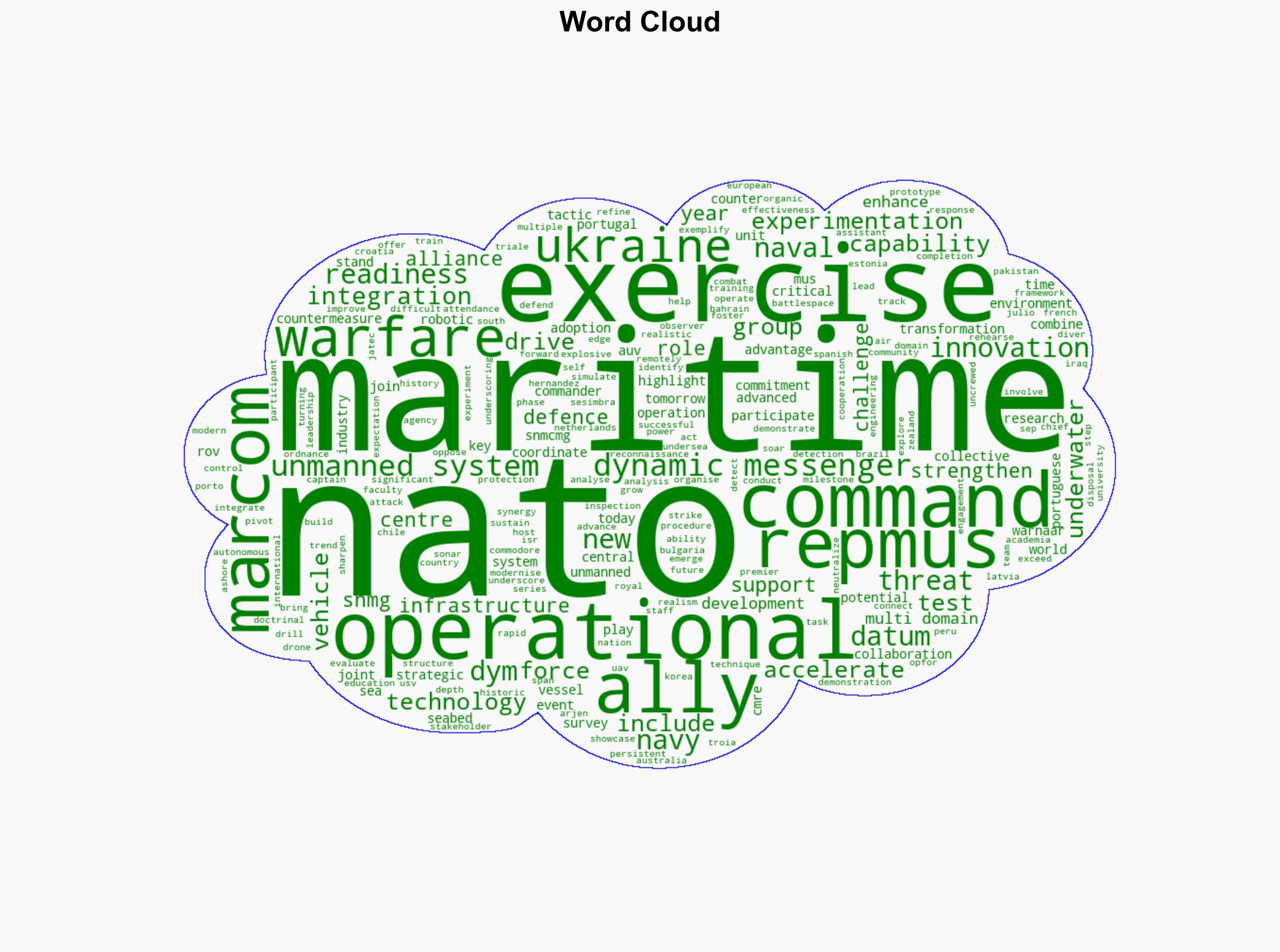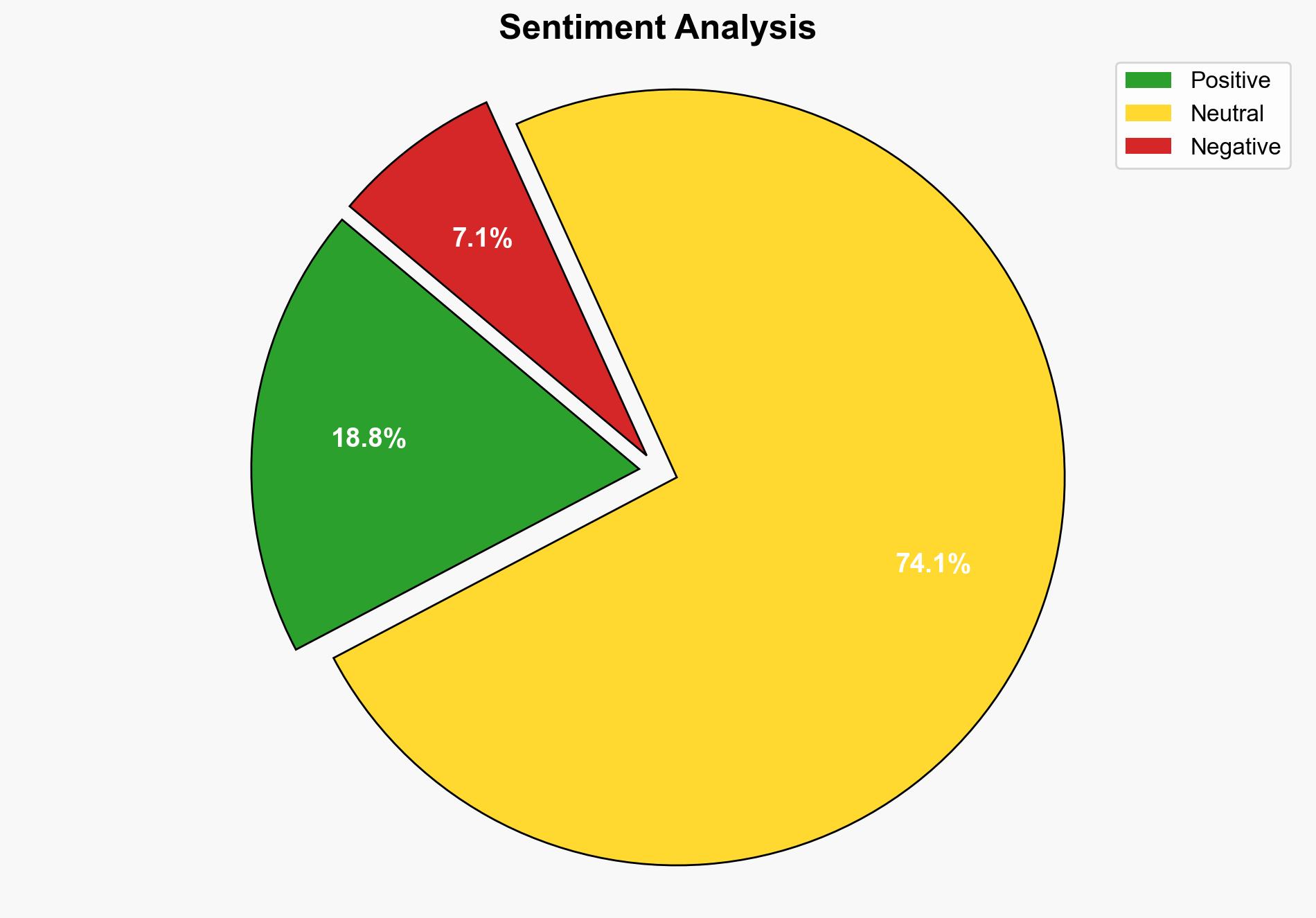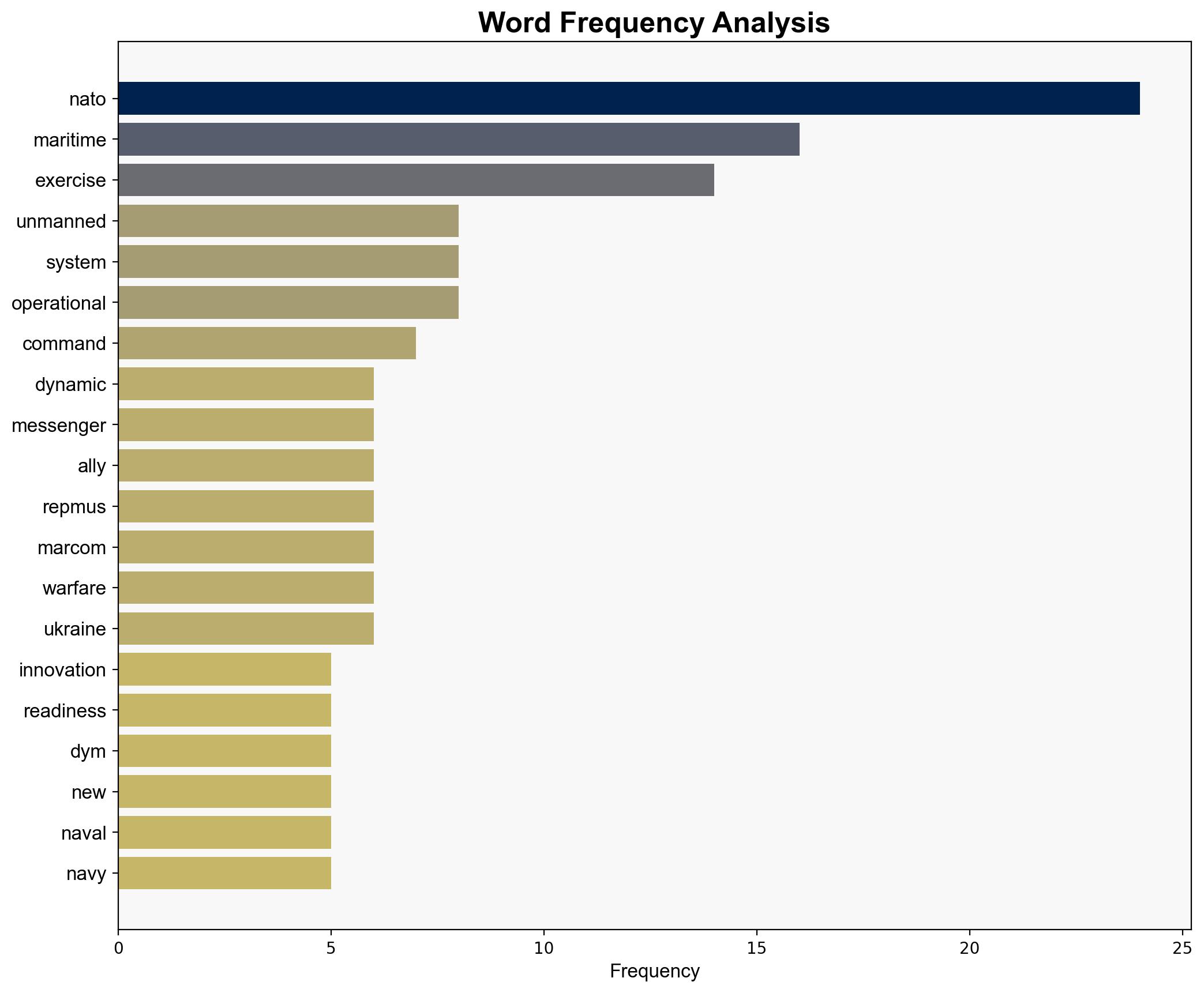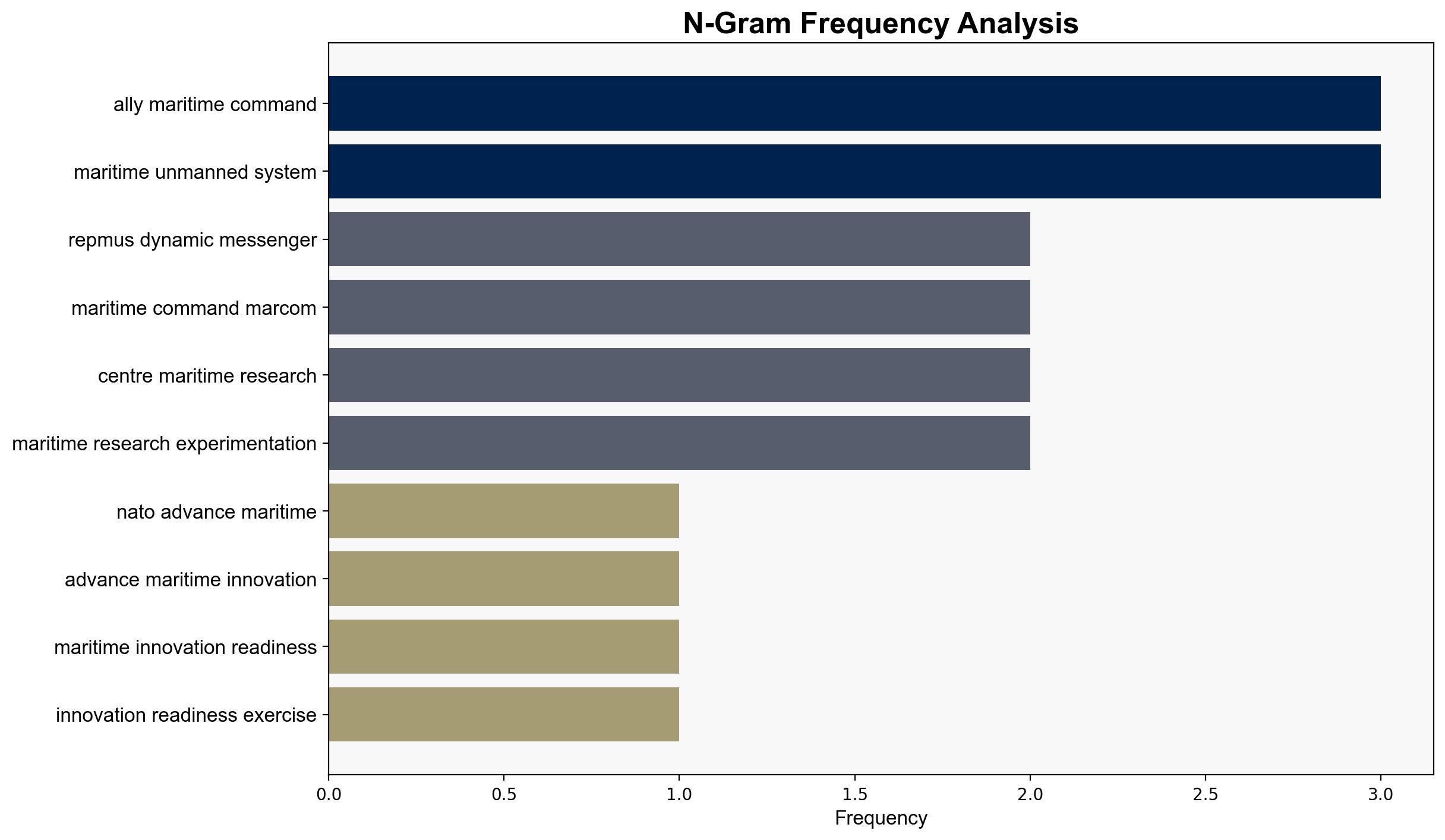NATO advances maritime innovation and readiness through Exercise Dynamic Messenger 2025 – Globalsecurity.org
Published on: 2025-09-30
Intelligence Report: NATO advances maritime innovation and readiness through Exercise Dynamic Messenger 2025 – Globalsecurity.org
1. BLUF (Bottom Line Up Front)
NATO’s Exercise Dynamic Messenger 2025 demonstrates significant advancements in maritime innovation and readiness, focusing on integrating unmanned systems into naval operations. The most supported hypothesis suggests that this exercise enhances NATO’s strategic deterrence and operational capabilities in multi-domain warfare. Confidence in this assessment is moderate due to potential geopolitical implications and technological uncertainties. Recommended action includes continued investment in unmanned systems and strengthening alliances to maintain a technological edge.
2. Competing Hypotheses
1. **Hypothesis A**: Exercise Dynamic Messenger 2025 is primarily a strategic move to enhance NATO’s deterrence capabilities by showcasing advanced maritime technologies and integrating unmanned systems into naval operations.
2. **Hypothesis B**: The exercise is largely a diplomatic effort aimed at reinforcing international cooperation and demonstrating NATO’s commitment to collective security, rather than a focus on technological superiority.
Using the Analysis of Competing Hypotheses (ACH) method, Hypothesis A is better supported. The emphasis on operational experimentation, integration of unmanned systems, and the involvement of multiple NATO entities suggest a focus on enhancing deterrence capabilities.
3. Key Assumptions and Red Flags
– **Assumptions**: It is assumed that the integration of unmanned systems will significantly enhance NATO’s operational capabilities. Another assumption is that participating nations are fully aligned with NATO’s strategic objectives.
– **Red Flags**: Potential over-reliance on unmanned systems could introduce vulnerabilities. The absence of detailed information on the exercise outcomes and technological limitations presents a blind spot.
– **Cognitive Bias**: Confirmation bias may lead to overestimating the effectiveness of unmanned systems without considering adversarial countermeasures.
4. Implications and Strategic Risks
The integration of unmanned systems could shift the balance of power in maritime operations, potentially escalating tensions with non-NATO states. The exercise’s success may prompt adversaries to accelerate their own technological advancements, leading to an arms race in unmanned maritime technologies. Cybersecurity risks are heightened as reliance on unmanned systems increases.
5. Recommendations and Outlook
- **Mitigate Risks**: Enhance cybersecurity measures to protect unmanned systems from cyber threats.
- **Exploit Opportunities**: Expand collaboration with industry and academia to accelerate technological innovation.
- **Scenario Projections**:
– **Best Case**: Successful integration of unmanned systems deters potential adversaries and strengthens NATO’s strategic position.
– **Worst Case**: Technological vulnerabilities are exploited by adversaries, leading to operational setbacks.
– **Most Likely**: Gradual improvement in operational capabilities with ongoing technological and diplomatic challenges.
6. Key Individuals and Entities
– Julio Hernandez
– Arjen Warnaar
– Portuguese Navy
– NATO Maritime Command
– Allied Command Transformation
7. Thematic Tags
national security threats, cybersecurity, counter-terrorism, regional focus





